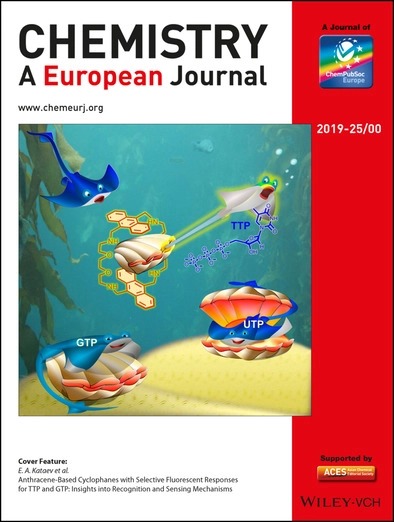The paper with the participation of NIOCh's researcher Dr. Aleksandr M. Agafontsev (international collaboration) is published in the journal Chemistry - A European Journal (IF 5,16)
Anthracene‐Based Cyclophanes with Selective Fluorescent Responses for TTP and GTP: Insights into Recognition and Sensing Mechanisms
Dr. Aleksandr M. Agafontsev, Dr. Tatiana A. Shumilova, Dr. Tobias Rüffer, Prof. Dr. Heinrich Lang, Prof. Dr. Evgeny A. KataevChemistry - A European Journal, 2019, V. 25, N 14, Pp 3541-3549
First published: 15 January 2019
https://doi.org/10.1002/chem.201806130

Abstract
Three anthracene‐based cyclophanes were synthesized and their binding properties towards nucleoside triphosphates were studied. A new polycyclic amine derived from dearomatized anthracene was identified as a major side product in the cyclization reaction between 9,10‐anthracenedicarboxaldehyde and diethylenetriamine. Its structure was determined by single‐crystal X‐ray analysis. The cyclophanes were found to form 1:1 complexes with all nucleoside triphosphates as well as with pyrophosphate in a buffered aqueous solution at pH 6.2. A turn‐on fluorescence response was observed for all nucleotides except for GTP, which demonstrated strong fluorescence quenching. The strongest turn‐on fluorescence was observed for the largest receptor 3 in the presence of thymidine triphosphate (TTP). Based on the NMR and fluorescence experiments, two major binding modes for nucleotide complexes were identified.
Altmetrics:


